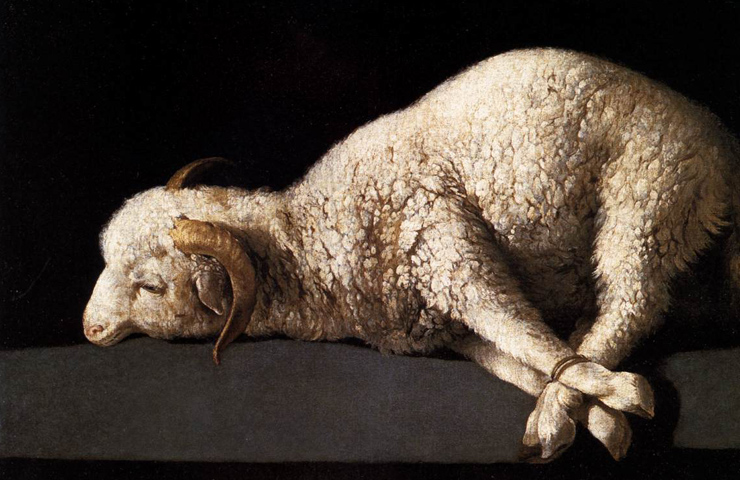



FRANCISCO DE ZURBARAN 1/3 – It is unknown if he has had the opportunity to see the paintings of Caravaggio, but his work presents, like that painter, a realistic use of chiaroscuro and darkness. Born in Fuente de Cantos, in Extremadura, this profoundly religious artist was able to represent the counter-reformist religiosity of the Spanish Church of the 17th century. The figures look to symbols of intense spirituality in the vast production of their sacred subjects. Modern is his conception of the still life, constantly in search of volumes, obtained by grouping objects. In the final phase of his activity, in extremely modern ways, he devoted himself to the still-dead. His oil painting (Agnus Dei, 38 x 62 cm) is hosted in the Madrid Prado Museum https://www.museodelprado.es/en

FRANCISCO DE ZURBARAN 2/3 – He studied painting in Seville, shaking friendship with Velázquez and becoming the painter of the religious spirit and the Church. When he married in 1617, he went to live in Llerena, continuing to have contacts with the Sevillian environment. Invited by the city of Seville, in 1628 he moved with his family and his eight assistants to meet the commissions assigned to them by monastic orders. Called Madrid in 1634, he made works of profane character, with the possibility of studying in Flemish and Venetian paintings in real collections. You can admire some of his paintings in the National Museum of Catalonia http://www.museunacional.cat/en 

FRANCISCO DE ZURBARAN 3/3 – Remained widowed again, he resumed in 1640, entering a period of artistic and existential crisis. He loved to paint his figures directly from nature, making great use of draperies, in which he was particularly competent. He has been able to interpret the spirit of his time, thanks to powerful day and visionary images linked to religious fervor. https://www.youtube.com/watch?v=3GPByW_hPNU His paintings were a source of inspiration for many artists, even for Dalí and Picasso. Its wonderful painting “San Ugo in the Refectory of the Cartesians” (oil on canvas, 267 320 cm), is visible at the Museum of Fine Arts in Seville http://www.museosdeandalucia.es/cultura/museos/MBASE/
Identity as a poem in continuous evolution Identification is never a final destination, but a…
The spark that triggers a path of introspection and inner transformation The title “ASTONISHMENT” immediately…
Reflections on waiting and the transformative winds that push you forward Minimalist poetry, with its…
If you don't know sadness, you can't have deep thoughts Depth is a multifaceted concept…
James Hamilton-Paterson: When life is a Pilgrimage His early work reflects a youthful optimism and…
Amadeo de Souza-Cardoso: synthesis of the pictorial currents of the early twentieth century "Amadeo de…
This website uses cookies.